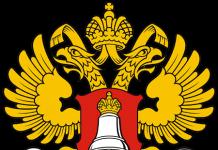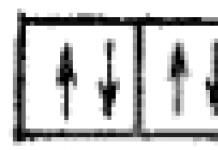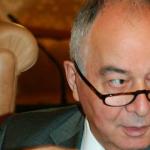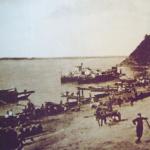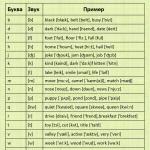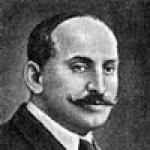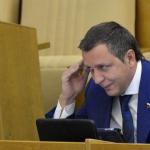Located in the southeast of the West Siberian Plain. Occupies mainly the southern part of the Vasyugan Plain and the Baraba Lowland. In the east are the spurs of the Salair Ridge (height up to 498 m). In the central and southern parts there is a rugged topography. The manes are 6-10 m high and stretch from northeast to southwest. The depressions between the ridges are occupied by swamps and lakes. Deposits of oil, natural gas, coal, gold, ceramic clay, peat.
Main river - Ob. In the Ob basin there are about 230 rivers (Inya, Berd, Shegarka, Baksa, etc.), in the Irtysh river basin - up to 85 rivers (Om, Tara, Tartas, etc.); in the region there are about 3 thousand lakes (Chany, Sartlan, Ubinskoye, etc.). There are many swamps (17% of the total area). The region has significant reserves of underground fresh and mineralized water. In the Novosibirsk area there is the Novosibirsk Reservoir.
.jpg) |
Ob, river in the West. Siberia. Formed by the confluence of the Katun and Biya in Altai. It flows into the Ob Bay of the Kara Cape, forming a delta (area more than 4 thousand km2). 3650 km (from the source of the Irtysh 5410 km), basin area 2990 thousand km2. In the middle and lower reaches the river is typically flat. Flood from April to July in the upper reaches and until September in the lower reaches. Average water flow 12,700 m3/s; the largest 42,800 m3/s. Main tributaries: Vasyugan, B. Yugan, Irtysh, Sev. Sosva is on the left, Chumysh, Tom, Chulym, Ket, Tym, Vakh are on the right. Fishing. Navigable. Novosibirsk hydroelectric power station. On the Ob - the cities of Barnaul, Novosibirsk, Nizhnevartovsk, Surgut, Salekhard. Yugansky reserve. |
Climate
Climate sharply continental. Average temperatures in January are from -16 °C to -20 °C, in July from +18 °C to +20 °C. The growing season ranges from 144-148 days in the north to 158-163 in the south. The vegetation is diverse and has a pronounced zonal distribution. Forests occupy 26% of the total area. Among the most common species: fir, spruce, pine, cedar with an admixture of birch, aspen and occasionally larch. In the Barabinskaya Lowland, birch and aspen groves predominate. The region is home to about 400 species of plants used in folk and official medicine and in the food industry. In the north, forest areas are inhabited by bear, reindeer, elk, lynx, roe deer, wolverine, otter, and river beaver. The basis of the fur trade is squirrel, weasel, and ermine. Birds include capercaillie and hazel grouse. The forest-steppe zone is inhabited by: wolf, corsac fox, ermine, weasel, jerboa, white hare, brown hare; in the lakes of Baraby - muskrat, water rat.
Faculty of Social Sciences and Humanities "APPROVED"
Dean of the Faculty of Social Sciences and Humanities
P.L. Zaitsev
"______" ___________ 2012
Regulations on the scientific student society of the Faculty of Social Sciences and Humanities
Omsk State University named after. F.M. Dostoevsky
1. General Provisions
1.1. Scientific student society of the faculty of social and humanitarian education of the State Educational Institution of Higher Professional Education “Omsk State University named after. F.M. Dostoevsky" (hereinafter - NSO) is a student public association that unites, on a voluntary basis, students of the faculty who want to actively participate in research and project activities in the humanitarian and social fields of scientific knowledge.
1.2. The NSO carries out its activities on the basis of the principles of self-government, the open nature of its activities, the spirit of mutual respect and the culture of scientific communication among students.
1.3. The NSO carries out its activities in accordance with the Federal Law “On Education”, the Federal Law “On Public Associations”, the Charter of Omsk State University and these regulations.
2. Membership in the NSO, rights and obligations of NSO participants.
2.1. Any student of the Faculty of Social Sciences and Humanities who wishes to engage in research activities can be a member of the NSO. Membership in the NSO is formalized by a written application at the Society Meeting. The student, after submitting a written application, is endowed with the rights and responsibilities defined by this provision.
Members of the NSO can be professors, teachers, researchers, doctoral students of the Faculty of Social Sciences and Humanities of Omsk State University who take an active part in organizing the activities of the society (as consultants and project managers).
Membership in the NSO terminates automatically upon completion of studies at the Faculty of Social and Humanitarian Education of Omsk State University. Membership in the NSO can be extended individually by decision of the Assembly even after completion of training, if the member of the society continues to actively participate in its work. Expulsion from the NSO is permitted in case of voluntary withdrawal or in case of gross violation of the points of this provision by decision of the NSO Meeting.
2.2. Members of the NSO have the right:
Elect and be elected to the NSO Council;
Make any proposals regarding the activities of the company and these Regulations;
Participate in all events held by the NSO and in discussions of issues within the scope of its activities;
Receive information about the activities of the NSO;
Present the results of your scientific research at meetings of the NSO and other scientific events at various levels;
Publish the results of scientific research in collections of student work, collections of materials, etc. press organs at various levels;
Nominate for participation in scientific competitions, grants, scholarships;
Protest any decision, action or inaction of the chairman of the NSO, his deputies and the secretary of the NSO at a general meeting of the company.
Freely resign from the NSO upon oral application.
2.3. Members of the NSO are obliged to:
Obliged to read and comply with these Regulations;
Implement decisions of the Assembly and Council of the NSO;
Actively participate in the scientific life of the NSO;
Attend at least 2/3 of NSO meetings;
To contribute to maintaining the prestige and increasing the authority of the NSO among students and teaching staff of the faculty and the university as a whole.
3. Goals and objectives
3.1. The main goal of the NSO is to create conditions for the comprehensive development and practical implementation of the scientific potential of students, increasing their research activity, identifying organizational potential, as well as attracting students to participate in scientific events at different levels, promoting the work of the university in training qualified specialists.
3.2. The main tasks of the NSO are:
Development of students' interest in research activities, motivation and stimulation of science;
Coordination of student scientific activities within the Faculty of Social and Humanitarian Education;
Development of intellectual abilities of youth;
Involving students to participate in various forms of scientific work;
More in-depth assimilation and consolidation of educational materials;
Providing assistance to students in scientific activities, in preparing and defending coursework, participating in conferences and competitions;
Informing students about scientific events, internship opportunities and publications of their work.
Organization and holding of scientific student conferences, seminars, round tables, discussion clubs and other events;
Establishing and maintaining scientific connections with other scientific student societies.
4. Organizational structure, formation procedure, rights and responsibilities of members of the NSO council.
4.1. The governing body is the NSO Assembly. The meeting is elected by a coordinating and executive body – the NSO Council. The Council of the NSO includes the Chairman of the NSO, his deputies, and the secretary. The term of office of the NSO Council is a full academic year.
4.2. The Chairman of the NSO is elected from among students annually, at the NSO Meeting, by a simple majority of votes. The chairman nominates his deputies and secretary, who are approved by a simple majority of votes. The chairman of the NSO manages all issues related to the activities of the society and represents the NSO in various structures of Omsk State University.
4.3. The chairman of a scientific society has the right:
Convene meetings of the scientific society (including unscheduled ones);
Make proposals for changes and additions to the Regulations on the Scientific Society;
The Chairman also has other rights provided for by these Regulations.
The chairman of a scientific society is obliged to:
Control the admission to members of the scientific society;
Listen and take into account all proposals from members of the scientific society;
Sign all documents related to the work of the scientific society;
To develop an action plan for the semester with its subsequent approval at the general meeting of members of the NSO;
Provide complete information about planned and upcoming events of the scientific commission of the scientific society;
Provide the faculty management with a work plan at the beginning of each semester and at the end of each semester a report on the work done by the scientific society;
Represent the scientific community in relations with the leadership of the faculty, other university structures, other universities, institutions and organizations.
4.4. The deputy chairmen of the NSO Council perform the following functions:
Responsible for work in the sector assigned to them (information support, editorial and publishing activities, organizational issues);
The deputy chairman of the scientific society for organizational issues is the authorized representative of the chairman of the SSS and performs relevant functions in his absence.
4.5. The NSO Secretary performs the following functions:
He is the Deputy Chairman of the Council of the NSO;
Prepares for meetings of the NSO Council;
Keeps minutes of the meeting of the NSO Council and other documentation necessary for the work of the society;
5. Operating procedure of the NSO.
5.1. Meetings of the NSO with the participation of all members are convened at least once a month. The meeting has the authority to resolve any issues related to the activities of the NSO. Decisions are made by voting (open or closed by decision of the Meeting), by a simple majority of votes, the quorum being half of all members of the NSO.
Meetings of the NSO Council are held once a month throughout the academic year.
5.2. The Council carries out the following activities:
Forms a plan for the working activities of the society, a schedule of its meetings;
Organizes and conducts scientific events;
Coordinates the collection and dissemination of information about scientific events, carries out information work through the university press, information stands, Internet resources, etc.;
Promotes the publication of students' scientific works;
Promotes student participation in scientific competitions and grants;
Creates initiative groups to carry out specific events;
Interacts with other student and youth associations;
Protects the scientific interests of students;
Makes proposals to improve the scientific work of the faculty;
NSO meetings are held once a month during the academic year in accordance with the society’s work plan. An unscheduled general meeting of members of the NSO is convened by decision of the chairman of the NSO or an initiative group consisting of at least 7 members of the NSO.
5.3. The work of the NSO is supervised by a scientific coordinator (from among the faculty teachers). The coordinator provides assistance in scientific-organizational, scientific-research, scientific-project and other activities of the NSO within the framework of this provision.
6. Final provisions
6.1. This regulation comes into force from the moment it is approved by the dean of the Faculty of Social Sciences and Humanities of Omsk State University.
6.2. Changes and additions to these Regulations are adopted at the NSO Meeting by a simple majority of votes, in case of equality of votes, the vote of the NSO Chairman is decisive.
6.3. The decision to terminate the activities of the NSO is made at the NSO Meeting, by a simple majority of votes in the presence of a quorum and is approved by the decision of the dean of the Faculty of Social Sciences and Humanities of Omsk State University.
Acting Chairman of the NSO, student of group GOS-901-O Kuzmenko A.V.
The economy of the Novosibirsk region in January-April 2018 was formed in accordance with the general trends in the economic development of the Russian Federation and the Siberian Federal District and is assessed as generally stable.
In January - April of this year. compared to the same period in 2017 industrial production index for the main activities of the year amounted to 103.2%, and the gross volume of production Agriculture increased by 1.6%.
Volume of work performed by type of activity "construction", amounted to 2.4 billion rubles or in a comparable estimate - 104.1% compared to January-April 2017. Using all sources of financing, 410 thousand square meters of total area of residential buildings were commissioned (which is 31.4% more than in January-April 2017).
Retail trade turnover in January-April 2018 amounted to 150 billion rubles with the index of physical volume of turnover compared to the same period in 2017 - 102.4%.
Consumer prices for goods and services in January-April 2018, compared to January-April last year, they increased by 0.5%, including food products by 0.7%, non-food products by 0.8%, and paid services to the population decreased by 0.2%.
Wholesale trade turnover organizations with the main activity “Wholesale trade” amounted to 3.6 billion rubles. and increased compared to January-April 2017 by 6.7% in comparable prices.
Freight turnover of transport enterprises for general use in January-April 2018 amounted to 611 million t/km, which is 0.2% lower than for the same period in 2017. Passenger turnover of public transport is 976.7 million passengers/km (102.5% compared to the same period in 2017).
During the reporting period in the Novosibirsk region, the number of deaths exceeded the number of births by 1.4 thousand people. Migration population growth amounted to 1.9 thousand people.
Economically active population according to a sample survey of the population on employment problems during the reporting period, it amounted to 62.1% of the total population of the region. Uemployment rate in the Novosibirsk region the average for January-April 2018 was 57.5%, level general unemployment– 7,5%.
In January-April 2018 real cash income of the population decreased and amounted to 97.8% compared to the same period in 2017.
Magnitude living wage in the first quarter of 2018 per capita was set at 10,749 rubles, incl. by socio-demographic groups of the population: working-age population - 11,404 rubles, pensioners - 8,620 rubles, children - 11,183 rubles.
Average monthly nominal accrued wage per employee of organizations in the Novosibirsk region in January-March 2018 amounted to 33,465 rubles and compared to January-March 2017 increased by 10.9%.
According to preliminary data for the reporting period inflation amounted to 1.5%.
Foreign trade turnover The Novosibirsk region in January-March 2018 amounted to $914.7 million, including exports - $435.7 million (47.6% of total trade turnover), imports - $479 million. USA (52.4%).
Foreign trade operations during the reporting period were carried out with 85 countries of the world, the largest partners: China (31.3% of trade turnover), Kazakhstan (11.7%) and Germany (5.5%).
The share of CIS countries in the total trade turnover amounted to 20% or 182.6 million US dollars, incl. exports – 106.1 million US dollars, imports – 76.5 million US dollars.
Trade turnover with non-CIS countries amounted to 732.1 million US dollars or 80% of the total volume of foreign trade. Imports from non-CIS countries amounted to 402.4 million US dollars, exports – 329.7 million US dollars.
The balance of foreign trade turnover is negative and amounts to 43.2 million US dollars. Only the balance with the CIS countries is positive - exports exceed imports by 29.6 million US dollars. The balance with non-CIS countries remains negative – imports exceed exports by $72.8 million.
The Novosibirsk region is a region with high industrial and agricultural potential, a developed system of science and education, and a constantly growing level of investment attractiveness.
The main competitive advantages of the Novosibirsk region are a diversified economy, favorable geographical location, developed transport and logistics infrastructure, unique human resources, scientific and innovation potential, as well as an effective regional investment policy.
In order to organize work to improve the indicators of investment attractiveness of the region in the Novosibirsk region, a regulatory framework has been formed that stimulates the development of investment processes and innovative activities.
The region has created one of the most effective mechanisms of state support for investment projects in Russia, which is provided within the framework of the regional target program “State support for investment activities in the Novosibirsk region for 2012 – 2021.” All activities within the program are coordinated and protected by the regional budget.
The development of industrial and technological park projects, where special, most comfortable conditions for investors are created, is the most important tool of regional investment policy, providing the region with serious competitive advantages in attracting investors. Today, five large park projects are being implemented in the region: Industrial and Logistics Park, Technopark of the Novosibirsk Academic Town, Biotechnopark, Medical Industrial Park, Medical Technopark.
According to the results of the National Rating of the investment climate in the constituent entities of the Russian Federation, which were presented at the XXII St. Petersburg International Economic Forum, the Novosibirsk region rose by eight points over the year and today ranks 19th. Head of the region A.A. Travnikov, assessing the results of the rating, noted that the region became the only subject of the Siberian Federal District Federation included in the TOP-20.
In general, investments in the Novosibirsk region come from more than 60 countries, including Great Britain, Cyprus, Kazakhstan, Canada, Korea, USA, Germany, China and Italy.
In 2017, enterprises and organizations of the Novosibirsk region used 175 billion rubles investment in fixed assets, which is 7.3% more than the level of 2016. The index of physical volume of investments in fixed capital amounted to 100.2%.
The main share in the total volume of investments in fixed assets is occupied by the costs of construction of buildings and structures - 63.1%; of which the construction of residential buildings accounts for 31.9%. 31% of the total investment was used for the purchase of machinery, equipment, vehicles, production and household equipment.
The priority activities for investment at the end of 2017 were “Transportation and storage” - 15.4% of the total investment in fixed assets, “Real estate operations” - 14.6%, “Manufacturing” - 11, 9%, “Activities in the field of information and communications” – 10%. According to statistics, most of the investments in the regional economy (95.1 billion rubles) were made by large and medium-sized organizations.
The main document for the development of the region for the coming years is the “Plan for the socio-economic development of the Novosibirsk region for 2018 and the planning period of 2019 and 2020.”
For 2018-2020, positive dynamics of the main target indicators of the forecast are predicted. Thus, the growth rate of the gross regional product in the Novosibirsk region in 2020 will be 107.3% compared to the level of 2016 according to the conservative version and 109.4% according to the moderately optimistic version of the forecast. The main contribution to the future growth of the physical volume of the region's GRP in the forecast period 2018-2020 will be provided by such types of economic activities as industrial production, including through the implementation of the program for re-industrialization of the economy of the Novosibirsk region and the implementation of investment projects; wholesale and retail trade; service sector.
POSITION
ABOUT THE STUDENT SCIENTIFIC SOCIETY
FACULTY OF SOCIAL AND PSYCHOLOGICAL
KEMEROVSK STATE UNIVERSITY
GENERAL PROVISIONS
The Scientific Student Society of the Social and Psychological Faculty of Kemerovo State University is a self-governing scientific association of students, undergraduates and graduate students of the faculty.
Control over the activities of the NSO SPF is carried out by a head from among the faculty teachers.
The main goals of the NSO:
Providing scientific and organizational assistance to students, undergraduates and graduate students of the faculty in their research activities;
Expanding cooperation with Russian, foreign and international organizations in the field of student research activities;
Promoting, together with departments, the publication of the results of students’ research work;
Popularization of research activities among students;
Promote the work of scientific sections, research groups and other forms of scientific research of students, undergraduates and graduate students at the faculty.
NSO MEMBERS, RIGHTS AND RESPONSIBILITIES
A member of the NSO can be a student, undergraduate or graduate student of any form of study, conducting research work, taking an active part in the scientific life of the university.
Membership of the NSO is voluntary. The acceptance of a new member of the NSO is carried out by the Chairman of the NSO by adding the student’s name to the general list, provided that the student meets the requirements provided for in clause 3.1.
A member of the NSO has the right:
Participate in all scientific events, research works, conferences, symposiums, forums, congresses, scientific work competitions in accordance with the established procedure for organizing such events;
Receive information about the activities and events of the NSO;
Submit works of your own scientific research for publication;
Make proposals to improve the scientific and organizational work of the NSO;
To be encouraged for active participation in research work and in organizing scientific events.
Members of the NSO are obliged to:
Actively engage in research work;
Contribute to the achievement of the goals and objectives of the NSO;
Fulfill assumed responsibilities in relation to the NSO;
Take part in the organizational and other activities of the NSO;
Comply with this regulation and the decision of the faculty NSO.
Membership of the NSO is terminated on the following grounds:
Voluntary termination of membership in the NSO;
Failure to comply with the VAT provision.
ORGANIZATIONAL STRUCTURE OF NSO
The organizational structure of the NSO includes:
Scientific director of the NSO;
Deputy Scientific Director of the NSO;
Chairman of the NSO;
Deputy Chairman of the NSO;
Faculty NSO Council.
ORGANIZATION OF WORK OF NSO
A meeting of members of the faculty NSO is convened at least twice a year. a meeting is considered competent if a simple majority of members of the NSO takes part in its work.
Meeting of members of the faculty NSO:
Hears and approves the report of the chairman of the NSO;
Approves the NSO work plan for the semester and priority areas of activity;
Approves members of the faculty NSO council.
The Council of the Faculty's NSO consists of the scientific director of the NSO, the deputy scientific director of the NSO, the Chairman of the NSO, the Deputy Chairman of the NSO, the heads of sections of the NSO of the faculty.
Functions of the Faculty Council of the Faculty:
Determines the directions of activity of the faculty's non-profit organization;
Convenes a meeting of the faculty NSO;
Carries out work on an ongoing basis in the main areas of activity of the faculty's non-profit organization;
Interacts with departments, public organizations and other structural divisions of the university.
Chairman of the faculty NSO:
Manages the activities of the faculty's non-profit organization;
Organizes research work in accordance with the profile of the faculty;
The term of office of the Faculty Chairman is one year.
FINAL PROVISIONS
Changes to this regulation are made at the initiative of the dean of the faculty, deputy dean for academic affairs, scientific supervisor of the NSO, Chairman of the NSO, and the Council of the Faculty NSO.
This provision comes into force from the moment it is adopted by the Faculty Council of the Faculty.
GEOGRAPHICAL POSITION, TERRITORY AND POPULATIONNOVOSIBIRSK REGION
The Novosibirsk region is located in the central part of the Eurasian continent, almost in the center of the Russian Federation in the southeast of the West Siberian Lowland - one of the greatest plains in the world. The area of the region is 178 thousand square meters. km. or 1% of the territory of Russia. The length of the region from west to east is more than 600 kilometers, and from north to south up to 400 kilometers. It lies within 75-85 degrees east longitude and 53-57 degrees north latitude. In the west it borders with Omsk, in the north with Tomsk, in the east with Kemerovo regions, in the south with Altai Territory, and in the southwest with Kazakhstan. The borders between the Novosibirsk region and its neighbors (Kemerovo, Tomsk, Omsk), as well as the Altai Territory and Kazakhstan, do not have clear natural boundaries. Their total length exceeds 2800 km. The length of the region’s border with the Republic of Kazakhstan is 316.4 km. Three natural zones alternate from north to south: forest, forest-steppe and steppe. This extreme compression of landscapes is the uniqueness of the nature of the region in comparison with neighboring regions of Western Siberia. We can say that the Novosibirsk region is almost the entire Western Siberia in miniature. The modern administrative boundaries of the region have existed since 1944. The Novosibirsk region is a subject of the Russian Federation and is part of the Siberian Federal District. The population is about three million people.
The administrative center of the region, Novosibirsk, is located on the picturesque banks of the Ob River. This is one of the youngest (founded in 1894) and largest cities in Siberia. Until 1926 it was called Novonikolaevsk. Within the region there are 30 administrative districts, which in turn are divided into 428 village councils. The administrative center of the region is the city of Novosibirsk, which includes 10 urban districts: Dzerzhinsky, Zheleznodorozhny, Zaeltsovsky, Kalininsky, Kirovsky, Leninsky, Oktyabrsky, Pervomaisky, Sovetsky, Central. In total in the region: 7 cities of regional subordination - Novosibirsk, Barabinsk, Berdsk, Iskitim, Kuibyshev, Ob, Tatarsk; 7 cities of regional subordination - Bolotnoye, Karasuk, Kargat, Kupino, Toguchin, Cherepanovo, Chulym; 18 urban-type settlements - Gorny, Dorogino, Kolyvan, Koltsovo, Kochenevo. Krasnozerskoye, Krasnoobsk, Linevo, Listvyansky, Maslyanino, Moshkovo, Ordynsky, Posevnaya, Station-Oyashinsky, Suzun, Chany, Chik, Chistoozernoye; 1581 rural settlements. Distance from Novosibirsk to Moscow = 3191 km. The time difference with Moscow is 3 hours more, with Vladivostok 4 hours less.
GEOLOGICAL HISTORY AND PALEONTOLOGY
In the distant past, for hundreds of millions of years, a significant part of the region’s territory was the bottom of an ancient sea. Proof of this is paleontological finds of fossilized remains of ancient marine animals. In the Jurassic and Cretaceous periods (100-150 million years ago), ancient reptiles - dinosaurs - lived in the sea and on land, but dinosaur bones are not found in the region, since the corresponding geological layers are located here at a depth of 1-2 kilometers and are inaccessible. In those distant geological epochs, the climate in Siberia was warm, subtropical. This is evidenced by imprints of leaves and petrified trunks of ancient heat-loving plants. In the last 1-2 million years, glaciations of large areas of the continent have occurred more than once. Glaciers did not enter the region, but their proximity made the climate cold. The landscape at that time resembled the modern northern tundra. During the Ice Age, mammoths, woolly rhinoceroses, cave bears, primitive bison, aurochs, giant deer and cave lions lived (video film “In the Footsteps of Paleontological Finds”). All these animals became extinct relatively recently: 7-15 thousand years ago. The nature exposition of the Novosibirsk State Museum of Local Lore contains a unique exhibit - the skeleton of a female mammoth, found in 1939 in the eroded bank of one of the rivers in the region. Individual bones, teeth, and mammoth tusks are found quite often, but a complete skeleton is a rare find.
RELIEF, MINERAL RESOURCES
The predominant part of the territory of the Novosibirsk region is located in the West Siberian Lowland, so its surface is mostly flat (Baraba Lowland and Kulunda steppes). The Ob River valley divides the region's territory into two parts: the left bank and the right bank. The Left Bank is a low-lying plain, the average height of which is 120 meters above sea level. A characteristic feature of the left-bank plain is ribbon-like elevations of the relief - ridges. They stretch parallel to each other, their height is usually 3-10 meters. Griva are former watersheds of ancient rivers formed when the glacier melted several thousand years ago. The right bank part of the region is more elevated and hilly. The northernmost, very flattened spur of the Altai Mountains - the Salair Ridge (Maslyaninsky District) - comes here. The highest point of the region is located on the Salair hills - 510 meters above sea level. To the north, in the Toguchinsky district, the Bugotaksky hills are located.
On the territory of the region there is the Gorlovka coal basin with proven anthracite reserves of about 800 million tons, and predicted resources - more than 5 billion tons. This is a unique raw material base for the electrode industry, ferrous and non-ferrous metallurgy. The Zavyalovskoye deposit with coal reserves of more than 50 million tons is also being exploited. In the north-west of the region, 7 oil fields have been discovered (Verkh-Tarskoye, Maloichskoye, Vostochno-Mezhovskoye, etc.) with recoverable reserves of about 40 million tons and one gas condensate field. Large resources of raw materials are also peat deposits in the north of the region with total reserves of about 1 billion tons, and forecast reserves are more than 7 billion tons. 24 alluvial and 1 ore gold deposits were taken into account in the southeast of the region. The Yegoryevskoye field has been in operation for more than 150 years, with annual production in the last decade amounting to 100-170 kg. In the eastern part of the region, marble is mined (Petenevskoe deposit). In 1995, the Ordynskoye placer deposit of zirconium and titanium was discovered 10 km west of the Novosibirsk reservoir. Refractory clays, cement raw materials, and facing marbles are also involved in circulation. There is a sufficient raw material base of most common minerals (sand, clay, crushed stone) to satisfy its own needs. The area's underground waters are valuable: mineralized (for medicinal purposes) and thermal (for heating). Table salt and soda are mined in the salt lakes of the southwest. Some salt lakes contain healing mud used in medicine. On the salt lake of Karachi, for example, there is a well-known resort in the country, Lake Karachinskoe.
SOILS AND AGRICULTURE
The soils of our region are diverse and their arrangement is very mosaic. This is due to the wide variety of natural conditions. Among the main types of soils in the Novosibirsk region one can note podzolic, swamp, gray forest soils, solonetzes and solonchaks. Various types of chernozems are widely used in agriculture. Agricultural lands (arable lands, pastures, hayfields) occupy approximately half of the region's territory. The main grain crop is spring and winter wheat. They also sow oats, barley, rye, peas, millet, and buckwheat. Large areas are occupied by planting potatoes and vegetables (carrots, cabbage, beets), and fodder crops. Flax, sunflower, and mustard are grown in the region; there are fruit and berry nurseries where currants, sea buckthorn, raspberries, and apple trees are cultivated. Even watermelons grow in the south of the region. Meat and dairy farming, poultry farming, and beekeeping are developed.
CLIMATE AND PHENOLOGY
The Novosibirsk region is located in the center of Eurasia, far from the seas and oceans, so the climate here is continental, with cold, long winters and short but hot summers. The city of Novosibirsk is located at the latitude of cities such as Moscow, Copenhagen, Hamburg, but the number of sunny days here is about 20 percent more than at the corresponding latitude in Europe. An average of 300-400 millimeters of precipitation falls in the region per year. All four seasons of the year are well expressed in our area. Winter is the longest season of the year, lasting five months - from the beginning of November to the end of March. There is snow throughout all these months. The average temperature in January (the coldest month) is minus 19 degrees Celsius. Winter is a difficult time for animals. Some animals (bear, badger, hedgehog, chipmunk, marmot) sleep in their burrows all winter. Despite the harsh winter, birds fly to us not only in spring from the south, but also in winter from the north - with the onset of cold weather, polar owls, waxwings, buntings and other nomadic birds appear. Spring lasts two months - April and May. In spring there are many sunny days, and there is less precipitation than in other seasons. In April, the snow melts intensively and streams flow. At the beginning of May, grass begins to grow and young leaves bloom on the trees. In spring, all nature awakens; many species of migratory birds arrive from the south. Summer begins in early June and lasts about three months. The warmest month of the year is July, the average July temperature is +19 degrees Celsius. The autumn months in Southern Siberia are September and October. In September it is still quite warm (+25 degrees). In October it gets cold, the leaves completely fall off the trees, it rains often, and the first snow usually falls at the end of October.
WATER AREA
The Novosibirsk region is still rich in water. About 380 rivers flow through its territory, including one of the largest rivers in the world - the Ob, which originates in the glaciers of the Altai Mountains and flows into the Arctic Ocean. In 1956, near Novosibirsk, the Ob was blocked by a hydroelectric dam, resulting in the formation of an artificial reservoir - the “Ob Sea”. Shipping is developed on the Ob. Among the region's rivers, it is also worth noting the Inya, along which the dachas of many Novosibirsk residents are located, the picturesque Berd and the leisurely flat rivers of the left bank: Tara, Om, Kargat, Karasuk. A characteristic element of the landscape are lakes, of which there are up to 3,000, they occupy 3.5 percent of the region’s territory. The largest lakes are located in the central and southwestern parts of the region - Chany (2,600 sq. km), Sartlan (238 sq. km), Ubinskoe (440 sq. km), etc. The lakes are mostly fresh and only a few are located in the driest southwestern part of the region, brackish and saline. Baraby lakes are shallow, with a depth of up to 1.5-2 meters. Only the large lakes Chany and Sartlan have a depth of up to 4-5 meters in some places. Baraba reservoirs are subject to seasonal and long-term fluctuations in water level and often to the point of complete drying out. In winter, rivers and lakes are covered with ice, the thickness of which reaches 1 meter. Small bodies of water freeze to the bottom. About 30 percent of the territory is occupied by swamps. Large tracts of swamps are located in the north of the region, where the world's most extensive swamp system, the Vasyugan swamps, extends its southern edge. The Novosibirsk region is also rich in groundwater resources: fresh and low-mineralized - suitable for domestic and drinking water supply, mineral - for medicinal purposes, thermal - for district heating.
VEGETATION AND NATURAL AREAS
For reasons of geographical location, the flora of the Novosibirsk region includes many plant species from Central Europe and Northern Asia. The vegetation of the region is characterized by diversity and pronounced zonality of distribution. It is represented by forest, swamp and meadow types. More than 1,200 species of higher spore and seed plants grow here. Forest tree species are represented by 11 species - cedar, pine, spruce, fir, larch, birch, aspen, etc. Shrub and herbaceous vegetation in the region is represented by asteraceae - 135 species, grasses - 106, sedges - 89, legumes - 67, cruciferous - 57 , Rosaceae - 54, etc. The forest cover of the region is 23.5%. Swamps occupy 17% of the total area. In the north of the region there is a swampy dark coniferous taiga consisting of spruce, fir, and cedar. To the south, birch, pine and aspen begin to predominate in the forests. In the swampy forests of the north of the region, various mosses and lichens grow luxuriantly, wild rosemary bushes, ferns, and many lingonberries and cranberries are common. Similar islands of the northern landscape penetrate further south in the form of so-called ryams. The forest-steppe landscape is more typical for the Novosibirsk region, where open spaces alternate with small islands of birch and aspen forest, which in Siberia are called kolki. The herbaceous vegetation of the forest-steppe is very diverse. Here you can find valuable medicinal plants, for example, St. John's wort, oregano, burnet, yarrow, lungwort, adonis and others. In the Barabinskaya forest-steppe there are many damp meadows and swamps overgrown with reeds, cattails and other moisture-loving plants. In the southwest of the region, near the border with Kazakhstan, the steppe zone begins - the Kulunda steppe. The steppe is characterized by various drought-resistant plants: fescue, wormwood, feather grass, medicinal licorice. Near the salt lakes you can find interesting salt-loving flora. The low-mountain black taiga of the Salair Ridge stands out in the landscape of the region. It consists mainly of fir and aspen. In the damp forest clearings of Salair, tall grass grows, as tall as a person. Karakansky, Ust-Aleussky, Ordynsky and other Priobsky forests are very beautiful and rich in berries, mushrooms, and medicinal plants. In addition to natural vegetation, vast areas of the region are occupied by fields where crops are grown, and there is also an Arboretum, which includes introduced species from various natural and geographical zones of the world.
ANIMALS OF THE NOVOSIBIRSK REGION
The fauna of the Novosibirsk region includes ten thousand species of invertebrates and 475 species of vertebrates. As you know, insects are the most numerous animals in terms of the number of species. In the Novosibirsk region there are several thousand species of insects alone. Among them are butterflies - more than 1400 species, orthoptera - more than 100 species, flies - more than 400 species, dragonflies - 62 species. Of these, there are about 150 species of diurnal butterflies, among which there are representatives of the exotic family of cavaliers - swallowtail and Apollo. Of the numerous Hymenoptera, wasps, bees and bumblebees are noticeable, and in forests there are often anthills of the red forest ant, sometimes reaching two meters in height. In our area, abundant in lakes and swamps, there are a lot of midges - dipterous insects (mosquitoes, midges, horseflies). The largest arthropod in our region is the narrow-clawed crayfish. Crayfish live in various bodies of water, including the Ob River and its tributaries. The largest spider in our country, the tarantula, is found in the forest-steppe. There are 33 species of fish in the rivers and lakes of the region. The largest fish is the Siberian sturgeon, which lives in the Ob and reaches more than 2 meters in length. There are relatively few amphibians and reptiles in our area. They have been little studied. The largest amphibian is the lake frog. More recently (2003), a population of the copperhead snake was discovered on Salair. In the Novosibirsk region, 350 bird species out of 764 species living in Russia have been recorded. This is quite a lot for 1% of the territory of the Russian Federation and is explained by its favorable geographical location and diversity of landscapes. The migration routes of many migratory birds pass through the lakes of the Barabinskaya Lowland, so the Chany lake system is of international importance as an important habitat for waterfowl. The smallest bird is the yellow-headed kinglet, and the largest is the mute swan. Among the 78 species of mammals there are many small animals: shrews, mice, voles, hamsters, and ground squirrels. There are two species of hedgehogs, moles, mole voles, and 9 species of bats. The common squirrel is common in forests, and the flying squirrel is occasionally found. The largest rodents in our country, beavers, live along the banks of small forest rivers in the north of the region. The largest predator in Southern Siberia is the brown bear, its body length can be up to two meters. Within the region, bears are found in the northern forests and forests of the Salair Ridge. Elk is the largest animal of our fauna; the body length of an adult male reaches three meters and weight 600 kg. And the smallest mammal is the tiny shrew, weighing less than 6 grams. Some mammals are acclimatized.
ECOLOGICAL SITUATION AND NATURE CONSERVATION IN THE NOVOSIBIRSK REGION
The environmental situation in the Novosibirsk region, as well as in most regions of our Planet, is unfortunately unfavorable. The diversity of natural areas makes local nature especially vulnerable. Harmful emissions from industrial enterprises and vehicles pollute the atmosphere, soil, and water, especially near cities. This has a detrimental effect on flora and fauna and worsens human health. Over the past 2-3 decades, several species of animals and plants have disappeared in the region. The nature of the region also suffers in the process of mining, from ill-conceived reclamation measures, and due to improper farming. The problem of water and wind soil erosion is very relevant for vast areas of our region. Over the past 50 years, the area of valuable cedar, spruce, and fir forests in the region has decreased by almost 2 times; Lake Chany, the largest in Western Siberia, is catastrophically drying up; many problems are associated with the artificial reservoir on the Ob. Thanks to the efforts of some officials and deputies, forests, arboretums and parks of Novosibirsk are being destroyed. The Siberian region is threatened by absurd national projects to divert Siberian rivers to the south by public figures who are very far from ecology. For example, Moscow Mayor Yuri Luzhkov is confident that with six to seven percent of the Ob River water, it would be possible to irrigate 1.5 million hectares of fields in the Kurgan and Chelyabinsk regions, as well as 2 million hectares of land in Kazakhstan, Uzbekistan and Turkmenistan, without damaging the ecology of the hydraulic network, while replenishing the Russian budget revenues from the sale of water to neighbors by $5 billion a year.
Nevertheless, more and more attention is paid to nature conservation every year. The relevant government services are fighting poaching, environmental pollution, and conducting environmental assessments of economic activities. Every year in the Novosibirsk region 3-5 new objects are recognized as natural monuments. In 2007, these included the Sukharevsky ryam, the Egorushkin ryam (both in the Kargatsky district), the Zolotaya Niva tract, the Pokrovskaya forest-steppe and the Gornostalevsky zaimishche (all three objects are in the Dovolensky district). In total, in the Novosibirsk region there are 24 state reserves of regional significance and about fifty natural monuments of regional significance. By 2020, according to the scheme approved by the Regional Council in 1995, about one hundred specially protected zones should appear. As a result, they will form a system of territories with little affected lands, flora and fauna, which will reflect and preserve the specifics of the natural appearance of the Novosibirsk region. Scientists from the Institute of Animal Ecology Systematics of the SB RAS, the Central Siberian Botanical Garden of the SB RAS, the Institute of Cytology and Genetics of the SB RAS, Novosibirsk State University and other organizations worked on the scientific basis for just such a set of specially protected natural objects.
Literature and sources of information:
1. Balatsky N.N. Taxonomic list of birds of the Novosibirsk region. Rus. ornithol. magazine, Express issue. 324. St. Petersburg, 2006.
2. Luzhkov Yu. Water and peace. M., 2008.
3. Materials of the Department of Natural Resources and Environmental Protection of the Novosibirsk Region.
3. Materials of the department “Nature of the NSO” of the Novosibirsk State Museum of Local Lore.
4. Mugako A.L. Catalog of vertebrates of the Novosibirsk region. Novosibirsk, 2002.
5. Kravtsov V.M., Donukalova R.P. Geography of the Novosibirsk region. Novosibirsk, 1996.
6. Red Book of the Novosibirsk Region (animals). Novosibirsk, 2000.
7. Red Book of the Novosibirsk Region (plants). Novosibirsk, 1998.
8. Red Book of the Russian Federation (animals). M., 2001
9. Chernobay L.P. A guidebook to the Salair Ridge. Novosibirsk, 2004.
